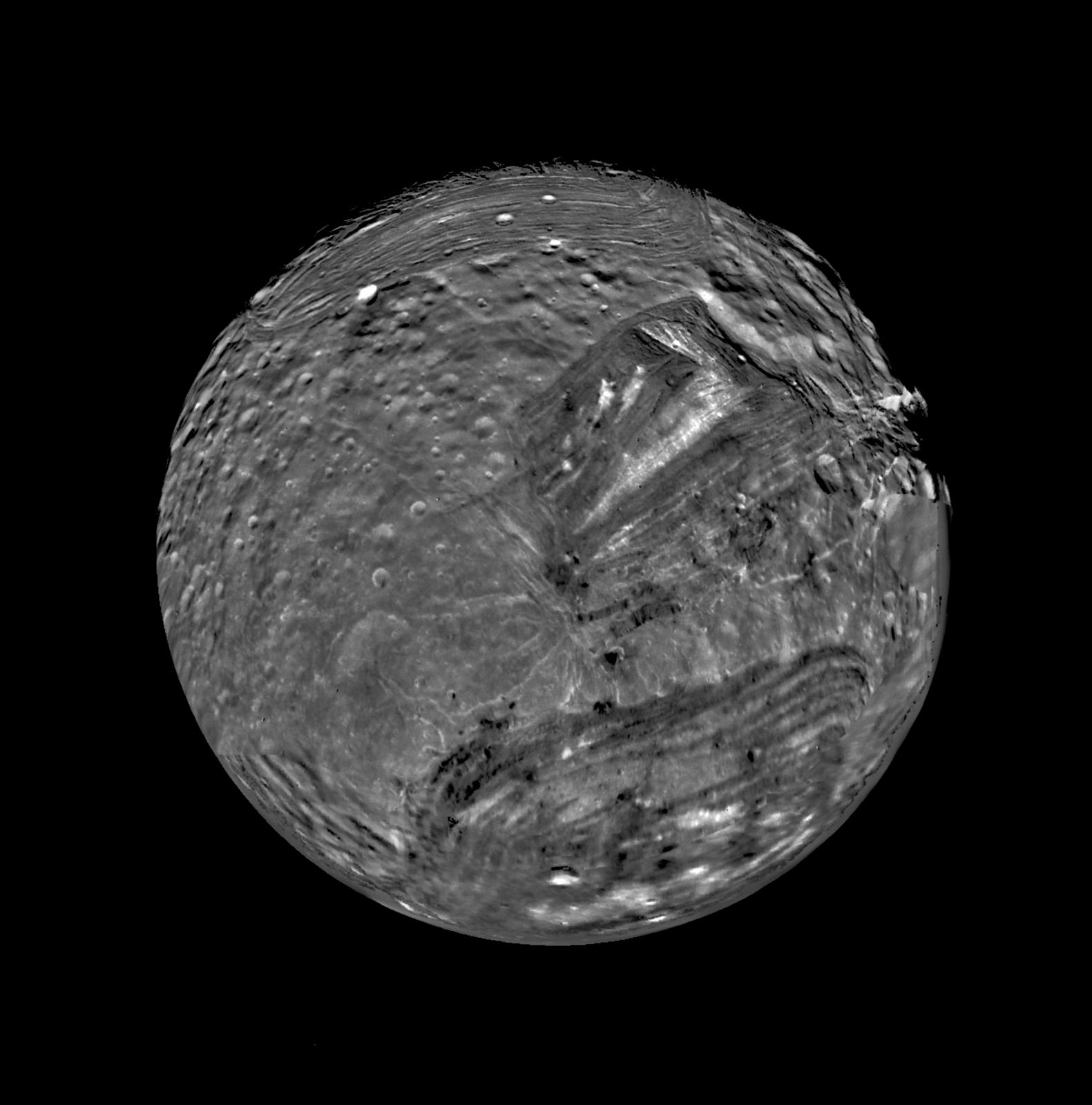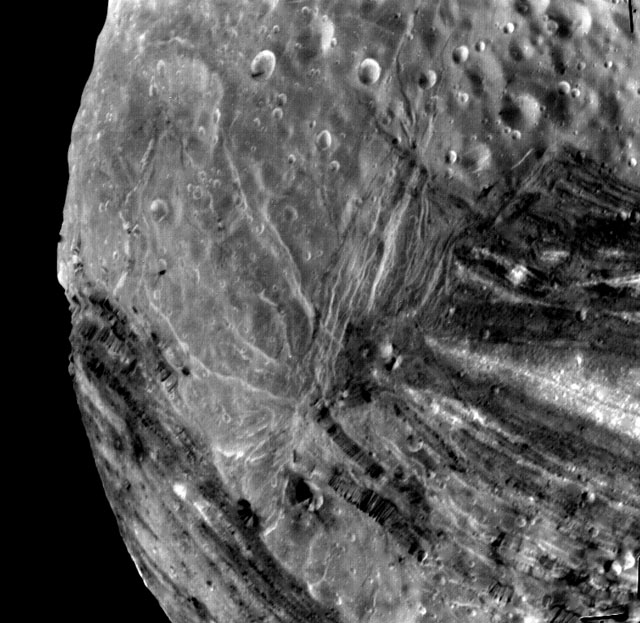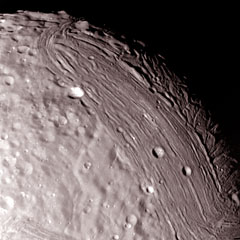Miranda
 This image is actually a composite of seven of the best images from the Voyager 2 Mission. From http://voyager.jpl.nasa.gov/ |
Miranda is the innermost and smallest of Uranus's major moons. It was discovered by Gerard Kuiper in 1948, who named it after a character in Shakespeare's The Tempest.[1]
Before the 1986 Voyager 2 mission, Miranda was assumed to be cold and geologically inactive. Miranda's most scientifically interesting feature prior to this mission was its unusually high orbital inclination. However, pictures taken by Voyager 2 showed that both Miranda and its sister moon Ariel were far more geologically active than expected.
Miranda's surface is currently thought to consist of crystallized water ice[2], with rock and organic compounds underneath.
 Voyager 2 image of Miranda taken shortly before closest approach. January 24, 1986. Range 19,000 miles. From http://voyager.jpl.nasa.gov/ |
| Orbital Information | |
|---|---|
Semi-Major Axis |
129,390 km |
Eccentricity |
0.0013 |
Orbital Period |
1.431 days |
Inclination |
4.232° |
| Physical Characteristics | |
|---|---|
Mean Radius |
235.8 ± 0.7 km |
Mass |
6.59 ± 0.75 × 1019 kg |
Albedo |
0.32 |
Apparent Magnitude |
15.8 |
[1] Kuiper, G. P. "The Fifth Satellite of Uranus." Publications of the Astronomical Society of the Pacific. 61.360. (1949): 12.
[2] Bauer, James M. " The Near Infrared Spectrum of Miranda: Evidence of Crystalline Water Ice." Icarus. 158.1 (2002): 178-190.
